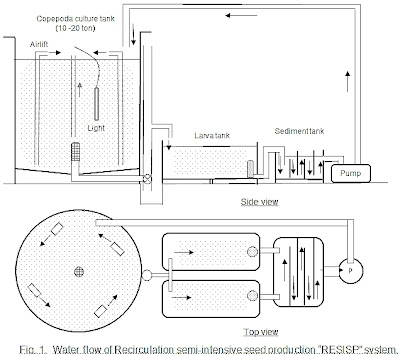RESISP (Recirculation Semi Intensive Seed Production)

SISP (Semi Intensive Seed Production) had problem which hard to estimate survival due to microalgae bloom, only we knew when dry up. Thus, I improved the system that copepoda culture tank connect to larva tank which shallower than copepoda tank and copepoda culture water recirculate between tanks to give enough feeds, copepoda and phytoplankton and maintain smiler water quality as copepoda tank. Figure of system and comparison among ISP (Intensive Seed Production), SISP and RESISP are below. Table revised on Oct.25.




